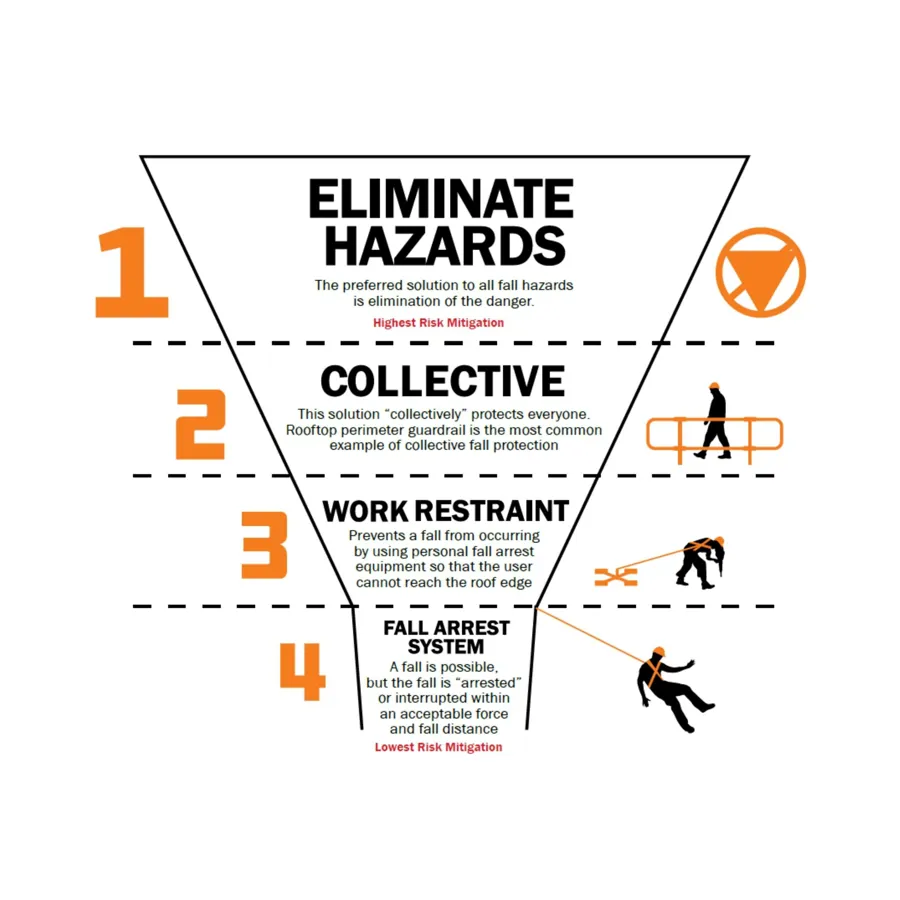
You are visiting the Canada Kee Safety website from United States. Would you like to go to the United States site?
Depending on the circumstances, the standard requires one of three types of fall protection:
Personal fall arrest system. A system used to arrest an employee in a fall from a working level.
Fall restraint system. A fall protection system that prevents the user from falling any distance.
Work-positioning equipment. A body belt or body harness system rigged to allow an employee to be supported on an elevated vertical surface, such as a utility pole or tower leg, and work with both hands free while leaning.
The standard requires employers to protect an employee working from an aerial lift using one of the following:
A personal fall arrest system or
A fall restraint system.
The standard requires employers to protect an employee working at heights of more than 1.2 meters (4 feet) on a pole, tower, or similar structure using one of the following, as appropriate:
A personal fall arrest system,
Work-positioning equipment,
A fall restraint system, or
Other fall protection meeting Subpart D of OSHA’s general industry standards or Subpart M of OSHA’s construction standards, as applicable. A guardrail system meeting one of those standards is an example.
Generally yes. Starting April 1, 2015, the standards require qualified employees climbing or changing location on poles, towers, or similar structures to use fall protection, unless the employer can demonstrate that climbing or changing location with fall protection is infeasible or would create a greater hazard than climbing or changing location without it. (Note that “climbing” includes going up or down the pole, tower, or other structure.)
The information above is taken from the United States Department of Labor OSHA website on 10/20/15. See the link below.
https://www.osha.gov/dsg/power_generation/faqs.html

A truly comprehensive rooftop solution follows the Hierarchy of Fall Protection. An expert starts by inspecting the roof site for potential fall hazards. From there, a complete system solution and recommendations are created that descend down the four levels of the hierarchy, from simple, sensible approaches for eliminating risks all the way down to lifesaving personal protection systems.
Collective Systems require no additional training to use. Fall Restraint and Fall Arrest Systems both require a high level of user competency, training and additional inspection to be used properly.